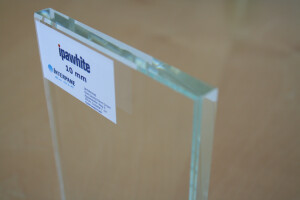The Ancient Mediterranean A new permanent exhibition of 1200 m2 at the Ny Carlsberg Glyptotek
The Architects BONDE + LJUNGAR Arkitekter MAA have created the framework for the new permanent exhibition, The Ancient Mediterranean at the Ny Carlsberg Glyptotek to celebrate the centenary of Hack Kampmanns extension to display the Museums collection of antiquities.
The Ancient Mediterranean has been created from the ideas and concepts of Museums Director Jette Christiansen. A direct result of recent scientific research that has produced a new approach and understanding of antique culture and their interactions and integration across the regional boundaries of the Mediterranean and especially the Phoenician mariners and traders as a catalyst.
It is our goal that the new exhibition should be seen as a natural extension of Hack Kampmanns work, in its rugged catacomb like rooms, showing a rough appearance but at the same time, and in contrast, possess a fineness and exclusivity, which as an example can be seen in the various detailing of the floor .
Our architectural concept is that the new layout of the Museum should show a lightness and transparency – in contrast to the original exhibition rooms and the architectural and historic weight of the building – at the same time serving as an anonymous background, achieved by the contrast of materials and textural effects of the exhibits which are mostly images in fired clay, stone and bronze.
It is important for both the Museum and us to continue the inheritance of using beautiful and good quality craftsmanship. Therefore all the furniture and fittings for the exhibition rooms have been specially designed continuing the high standard of quality workmanship. Exhibition display cabinets, plinths of black basalt and lacquered wood, lighting, stainless steel sun shades, window fittings and information boards – all of these have been designed and specially made for the exhibition rooms and their antique contents.
It is our wish that the new furniture and fittings possesses fineness, lightness and an exclusivity, which is seldom seen in a museum setting. As a main theme through the work leading up to the formation of the exhibition – an expressive anonymity and pure minimalism.
The new exhibition display cabinets are seen to be translucent and transparent without any inconvenient and annoying frames around the glass, both of which give the cabinets lightness and gives the visitors a sense of being a part of the exhibition. All visible parts are constructed in a combination of clear and sand blasted glass, exterior fittings and plinth fascias are brown patinated tombac (brass alloy), and the interior fittings are of matt stainless steel. The same materials are used throughout the exhibition.
It has been our basic concept to create a good source of light throughout the exhibition, both for the visitors as well as for the exhibits. The colour scheme, the exclusive sun shades and up-light chandeliers have brought the light of day into the exhibition rooms, whereas before it was only entering through the facade, giving a dark cavernous light.
The Museums exhibits have received a new life, outlined by light and shadow, where form, colour and details are more apparent. All the exhibits have been re-mounted on new plinths of sand blasted acrylic, whereas they were originally mounted on different light and dark natural stone or wood. The new plinths create a neutral and coherent framework for the exhibits.
The graphic identity for The Ancient Mediterranean was designed by Thora Fisker, who in an exemplary way has understood and solved the task – so that the graphic treatment forms a natural part of the exhibition in keeping with the Museums and our intention of strengthening the information level.




























